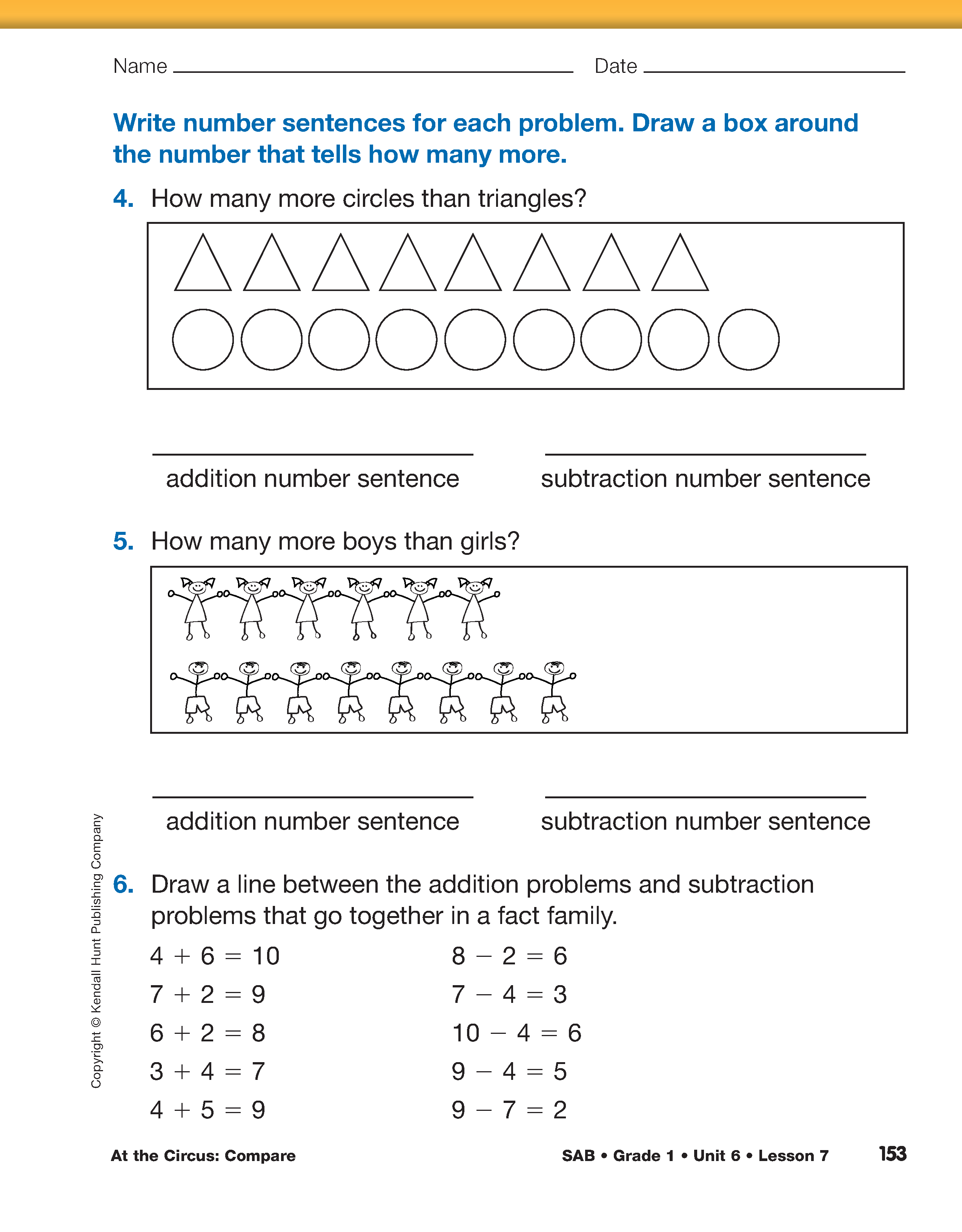Teacher: What was your number sentence and what were
some of the strategies you used to solve this problem?
Jackie: I wrote $4 + $5 = $9. Jacob had $4 and I knew I
had to add some number to get to 9. I started at 4 and counted
up to 9 on my fingers. I said 5, 6, 7, 8, 9. I counted up 5
fingers to get to 9. That's how I knew he needed 5 more
dollars.
Teacher: Very good, Jackie. You used the counting-up
strategy. In Jackie's number sentence, let's draw a box around
the number 5 so we know that he needs 5 more dollars. Can
anyone describe a different strategy?
Mariella: I did it with cubes. I made a train of 9 cubes
to show he needs $9. Then I broke off 4 cubes because that's
how much he had. There were 5 cubes left, so I knew that he
needed 5 more dollars. My number sentence is
9 − 4 = 5. If you
start at 9 and count back 4: 8, 7, 6, 5, the answer is 5. I
drew a box around the 5.
Teacher: That's very interesting. Jackie has an addition
sentence and Mariella has a subtraction sentence. Class, what
do you think?
Colin: I think they're both right. You can either say 4
+ 5 = 9 or 9 − 4 = 5. For both ways, 5 is the amount Jacob needs.
Teacher: Great answer, Colin. What numbers do you see in
both problems?
Faith: There's a 4, 5, and a 9 in both the addition and
subtraction problem.
Teacher: In both sentences the whole is 9 dollars and
the parts are 4 and 5. We can say that 4 + 5 = 9 is related to 9
− 4 = 5. They are part of a fact family. In a fact family we
have two addition and two subtraction number sentences that
use the same numbers. What other addition problem is related
to 4 + 5 = 9?
Jacob: We can turn the numbers around and say 5 + 4 = 9.
Teacher: Very good, Jacob. Now, who can think of another
subtraction number sentence?
Teacher: Very good, Jacob. Now, who can think of another
subtraction number sentence?
Teacher: Does 4 − 9 = 5?
Carlos: No, you have to start with the largest number. I
think the other subtraction number sentence is 9 − 5 = 4. You
start with the 9, which is the whole, and you take away one of
the parts. Since we said 9 − 4 = 5, this time we'll take away
the other part and say 9 − 5 = 4.
Teacher: Good thinking, Carlos. Now, we have four number
sentences that belong to the same fact family: 4 + 5 = 9, 5 + 4
= 9, 9 − 4 = 5, and 9 − 5 = 4.

















